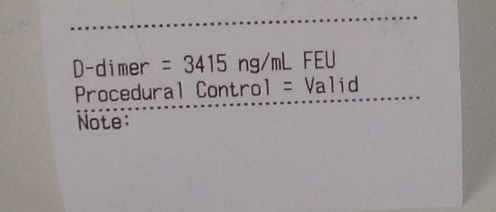
Case 5- "Me cuesta respirar" ("it's hard to breathe")
Chronic Obstructive Pulmonary Disease (COPD) is seen not infrequently at our center in Guatemala. Most often the patients we see with COPD are older women who have spent decades cooking over a wood burning stove. One such patient, a 76yo female with multiple prior visits for exacerbations of COPD, presented a few months ago.
She was markedly hypoxic with a reported initial oxygen saturation of 60%. It was not unusual for her to present hypoxic. On all of her prior visits she had presented hypoxic, but never quite this profoundly hypoxic. At prior visits, she had typically presented with an oxygen saturation in the 80s. At prior visits, her clinical condition had improved fairly rapidly with appropriate interventions (supplemental oxygen, inhaled beta agonists, steroids, etc.). At this visit, she was more hypoxic and not improving with our typical interventions.
Our patient was evaluated by my colleague, Dr. Dina. In light of the patient's respiratory distress and minimal improvement with initial interventions, Dina wisely chose to investigate further with labs and ultrasound.
D-dimer is a lab test that if low (generally less than 500ng/mL) can largely rule out thromboembolism. At 3,415ng/mL, our patient's D-dimer was not low.

Point-of-Care Echocardiogram revealed a plethoric IVC with minimal respiratory variation. There was D-ing of the septum (as discussed in a prior post, indicative of increased pressure and/or volume on the right side of the heart). On apical four chambered view, McConnell's sign (sparing of the apex of the right ventricle) appeared to be present. McConnell's sign, when present, has demonstrated relatively high specificity for diagnosing pulmonary embolism (PE).

The combination of the above (history, clinical presentation, labs, and imaging) was highly suggestive of pulmonary embolism (PE) being the likely cause of our patient's hypoxia. In an ideal world (or, stated differently, in other locales of our less than ideal world), this suspicion would be confirmed with further imaging (typically CTA of chest). We do not have a CT scanner at our site. The closest scanner is about an hour away and a scan costs around Q1,500 cash (roughly $200). While that may sound like a pretty sweet deal, for the vast majority of our patients that price tag is prohibitive. Our patient was no exception. She and her family indicated they did not plan to pursue further radiographic confirmation of our suspected diagnosis. She was however agreeable to starting medication to treat presumed PE. Anticoagulation was initiated. Our patient improved and eventually returned to her baseline level of chronic hypoxia.
A few months later, our patient missed a follow-up appointment. When we called to check on her, her family informed us that she had died. We had not granted her immortality by treating her (presumed) PE. We had however granted her several additional months of sharing life with her family and community. And, as anyone who has ever lost a loved one can attest, that, dear reader, is an even sweeter deal than a $200 CT scan.
